Namtso Lake: Your Ultimate Guide to the Tibetan Wilderness
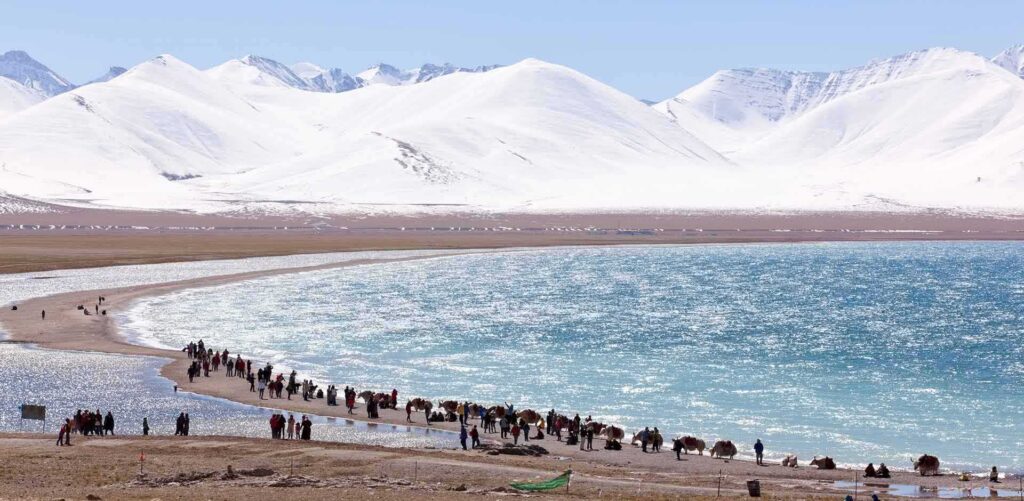
An Essential Guide to Visiting Namtso Lake
Nestled high in the Tibetan plateau, Namtso Lake, or “Heavenly Lake,” is a breathtaking gem that captivates visitors with its mesmerizing beauty and spiritual significance. As the largest saltwater lake in Tibet, it stretches across a sprawling landscape, flanked by the majestic Nyenchen Tanglha Mountains and vibrant grasslands. This sacred site is not only a natural wonder; it is revered by Tibetan Buddhists as a holy destination, drawing pilgrims from far and wide who seek to connect with its profound spirituality.
A journey to Namtso Lake is more than just a trip; it’s an immersive experience that offers a unique glimpse into the enchanting nomadic culture of Tibet. Whether you find yourself strolling along the crystal-clear shoreline, witnessing the play of light on the lake’s surface at sunrise, or exploring the sacred Tashi Peninsula, every moment here invites reflection and awe. With its high altitude and dramatic scenery, Namtso Lake is a place where the ethereal beauty of nature meets the deep-rooted traditions of Tibetan life.
In this essential guide, we will equip you with everything you need to know to make the most of your visit to Namtso Lake. From practical tips on acclimatization and travel logistics to must-see attractions and cultural insights, you’ll be prepared to embark on an unforgettable journey to one of Tibet’s most iconic landscapes. Prepare to be enchanted by the serenity of Namtso Lake and the warmth of its people, as your adventure in this sacred realm unfolds.
In This Guide
- An Essential Guide to Visiting Namtso Lake
- The Rich History and Legends of Namtso Lake
- Main Highlights: What You Absolutely Can’t Miss
- Planning Your Visit: A Practical Guide
- Tickets: Prices, Booking, and Tips
- How to Get There: A Complete Transportation Guide
- Local Cuisine and Accommodation Nearby
- Frequently Asked Questions
- Final Thoughts on Your Trip
The Rich History and Legends of Namtso Lake
Namtso Lake, known as “Heavenly Lake,” is not only a breathtaking natural wonder but also a site steeped in rich history and profound spiritual significance. This stunning body of water, located at an elevation of 4,718 meters in the Tibetan Plateau, has long been revered by Tibetan Buddhists and nomadic cultures alike.
The lake is surrounded by a tapestry of legends that speak to its sanctity. One of the most significant tales is that of the goddess Namtso, who is said to watch over the lake and its pilgrims. According to local folklore, she transforms into a beautiful swan each night, soaring above the waters to bless those who visit with sincere hearts. This enchanting belief draws many pilgrims who come to perform kora—a ritual circumambulation of the lake—seeking spiritual cleansing and enlightenment.
Historically, Namtso Lake has served as a vital resource for the nomadic communities that inhabit the region. The lake’s high-altitude environment supports a rich biodiversity, attracting flocks of migratory birds and providing grazing grounds for yaks and sheep. These nomads, deeply connected to their land, view the lake as both a life source and a spiritual haven, often incorporating its sacredness into their traditional practices and rituals.
In addition to its natural beauty, the Tashi Peninsula on the southern shore serves as a focal point for spiritual exploration. Here, the Tashi Dor Monastery stands as a testament to the area’s rich Buddhist heritage. Founded centuries ago, this monastery houses revered statues, including those of Guru Padmasambhava, and remains a pilgrimage destination for both locals and visitors seeking to connect with Tibetan Buddhism.
The Holy Elephant Gate, a recently reopened site on the northern bank, adds another layer to the lake’s historical significance. This natural rock formation resembling an elephant drinking water has been a pilgrimage spot for generations, symbolizing a gateway to spiritual realms. Many believe that passing through this stone structure can lead them closer to the divine.
Throughout the ages, Namtso Lake has also been a backdrop for various cultural festivals, including the famous Ngaqu Horse Racing Festival. Celebrated in early August, this event showcases the rich traditions of Tibetan nomads, providing a vibrant glimpse into their way of life and the deep-rooted connections they have with Namtso Lake.
Visiting Namtso Lake is more than just a visual delight; it is an immersion into a world where legends, history, and spirituality intertwine. As you stand before the azure waters, framed by majestic snow-capped peaks, you can almost hear the whispers of the ancients and feel the presence of the goddess, inviting you to partake in the timeless dance of faith and nature that continues to resonate through the ages.
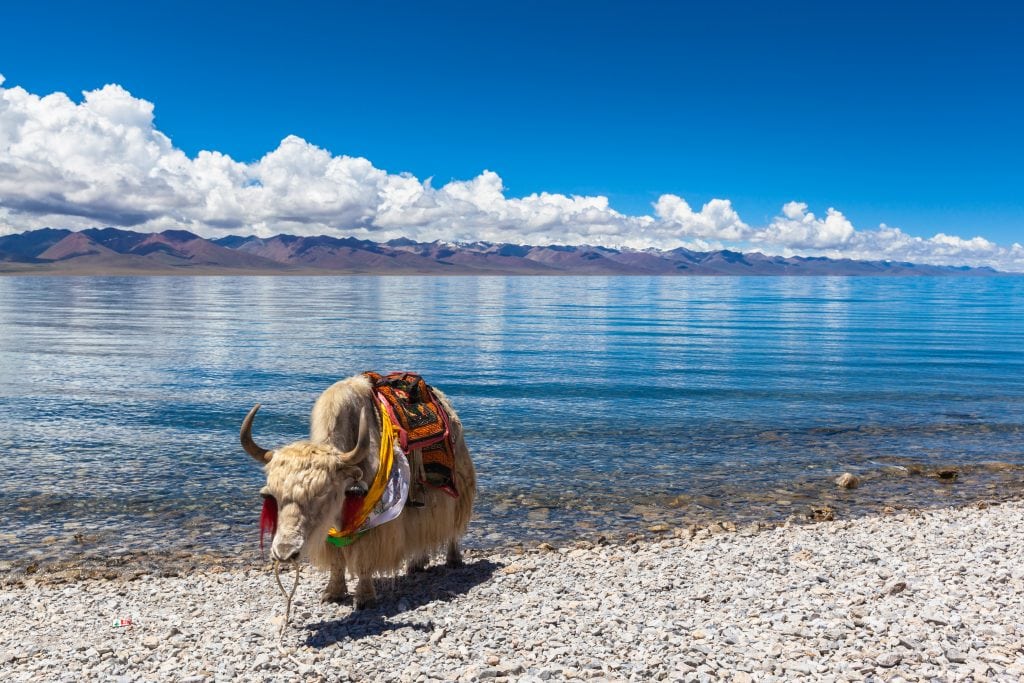
Namtso Lake.
Main Highlights: What You Absolutely Can’t Miss
Namtso Lake, often referred to as the “Heavenly Lake,” is a jewel of Tibet that captivates visitors with its stunning landscapes and rich spiritual heritage. Here are the main highlights you absolutely can’t miss when exploring this enchanting destination.
Tashi Peninsula
At the heart of Namtso Lake lies the Tashi Peninsula, a must-visit area offering breathtaking views and spiritual significance. Here, you can approach the lake’s crystal-clear waters and immerse yourself in the vibrant nomadic culture. The Tashi Dor Monastery, located on the peninsula, houses revered Buddha statues and is surrounded by natural rock formations and meditation caves that have welcomed pilgrims for centuries. The serene environment is perfect for a leisurely stroll, where you may encounter local pilgrims performing the sacred kora (circumambulation) around the lake.
Holy Elephant Gate
Don’t miss the newly reopened Holy Elephant Gate on the northern bank of Namtso Lake. This striking natural rock formation, resembling an elephant drinking at the lakeside, is not only a scenic attraction but also a spiritual site for many Tibetan pilgrims. From this vantage point, you can capture stunning panoramic views of the lake, the majestic Nyenchen Tanglha Mountains, and the expansive sky. The Holy Elephant Gate serves as a symbolic entrance to a sacred realm, making it an essential stop on your journey.
Stunning Lake Views
Plan your visit during the summer months (July to September) to experience Namtso Lake at its most spectacular. During this season, the lake’s deep blue waters contrast beautifully with the vibrant green grasslands and wildflowers that surround it. This is also the time to witness the Ngaqu Horse Racing Festival in early August, offering a unique glimpse into the lively Tibetan nomadic lifestyle. The sunsets at the lake are particularly magical, casting a golden hue over the landscape that is truly unforgettable.
Scenic Drive to Namtso Lake
The journey from Lhasa to Namtso Lake is an adventure in itself. Taking approximately four hours, the drive rewards you with picturesque views of rolling grasslands and yaks grazing peacefully. As you cross the Nagenla Pass at 5,190 meters above sea level, be prepared for breathtaking overlooks of the lake. The winding roads offer plenty of opportunities for photography, so don’t forget your camera to capture the stunning scenery along the way.
Cultural Encounters
While at Namtso Lake, make sure to engage with the local culture. You’ll find beautifully decorated yaks around the lake, which make for wonderful photo opportunities. For a small fee (around 50 RMB), you can snap pictures with these iconic animals, enriching your travel experience and supporting local families.
Dress Appropriately
Due to Namtso Lake’s high altitude (4,718 meters), the weather can be quite chilly, even in summer. It’s advisable to dress in layers to adjust to the rapidly changing temperatures and to bring sunscreen, sunglasses, and a hat to protect yourself from the strong sun. The winds can be brisk, especially near the lake, so being prepared will ensure a comfortable visit.
Overnight Stay in Damxung
Since there are no accommodations directly at the lakeshore, plan to stay overnight in Damxung, located about 39 kilometers south of Namtso Lake. While the lodging options may be more basic than those in Lhasa, staying here will allow you to experience the tranquility of the region and enjoy another day of exploration without the rush of a day trip.
Conclusion
A trip to Namtso Lake is a blend of stunning natural beauty, rich cultural experiences, and profound spirituality. Whether you’re soaking in the breathtaking views, exploring sacred sites, or engaging with the local nomadic lifestyle, the experience will leave an indelible mark on your travel memories. Be sure to take your time, enjoy every moment, and immerse yourself in the magic of this holy lake.
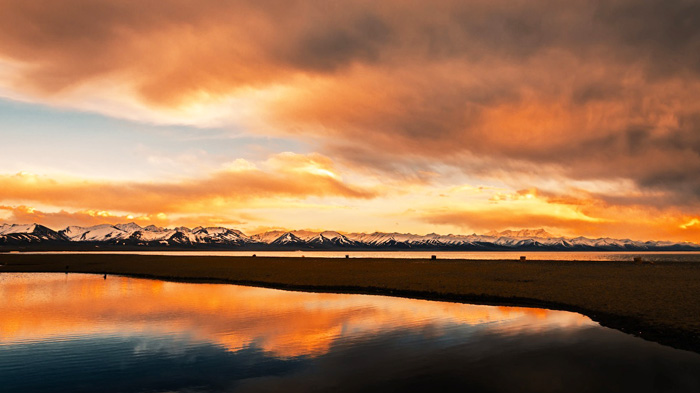
Namtso Lake.
Planning Your Visit: A Practical Guide
When planning your visit to the breathtaking Namtso Lake, one of Tibet’s most revered natural wonders, there are several important considerations to ensure a memorable and enjoyable experience. This guide provides essential tips and insights to help you navigate your journey.
Duration of Stay
Allocate at least two days for your trip. Namtso Lake is approximately 224 kilometers from Lhasa, requiring about four hours of driving time. To avoid rushing and fully appreciate the stunning landscapes and cultural experiences, it’s advisable to plan for a two-day excursion. This allows you to soak in the views, witness a spectacular sunset, and relax in nearby Damxung for the night.
Accommodation
Due to the absence of lodging along the lakeshore, you will need to stay overnight in Damxung, which is about 39 kilometers from the lake. While accommodations here are more basic compared to Lhasa, you can find middle-range hotels and guesthouses. If you have specific requirements such as family rooms, it’s best to communicate these in advance with your travel consultant.
Must-See Highlights
Tashi Peninsula is the most visited area on the southern shore of Namtso Lake. It’s the perfect spot to get close to the lake’s pristine waters and to explore spiritual sites like the Tashi Dor Monastery, home to revered Buddha statues. Don’t miss the Holy Elephant Gate on the northern bank, a newly reopened attraction in 2025. This giant stone formation, resembling an elephant drinking from the lake, offers striking views against the backdrop of the Nyenchen Tanglha Mountains.
Best Time to Visit
For optimal conditions, plan your visit in the summer months (July to September). During this period, the lake is at its most picturesque, with sparkling waters and vibrant grasslands. You may also experience local festivals, such as the Ngaqu Horse Racing Festival in early August, providing a glimpse into the rich nomadic culture of Tibet.
Travel Considerations
-
Watch for Weather Conditions: If you plan to visit in winter, be prepared for possible road closures due to snow, particularly on the final stretch over Nagenla Pass.
-
Acclimatization: To avoid altitude sickness, spend a few days in Lhasa acclimatizing before heading to Namtso Lake, as the altitude rises significantly from 3,650 meters in Lhasa to 4,718 meters at the lake.
-
Long Drive Preparation: The drive to Namtso Lake is scenic but can be tiring. Bring snacks and consider motion sickness medication for the journey, especially as the roads can be winding.
Dress Appropriately
Given the high altitude, dress in layers to adapt to fluctuating temperatures. It’s essential to have warm clothing, particularly during the evenings and at higher elevations. Don’t forget sun protection like sunscreen, sunglasses, and a hat, as the sun can be intense.
Capture Memories
Be ready to pay a small fee, typically around 50 RMB, for photos with the beautifully adorned yaks that roam the area. This is a great way to create lasting memories while also supporting local families.
Additional Tips
- Explore the Kora: Engage with local culture by witnessing or participating in the sacred Kora pilgrimage around Namtso Lake, where you can see pilgrims performing traditional rituals.
- Stay Connected: If you need assistance or further information about your trip, don’t hesitate to reach out to local travel consultants or guides who specialize in Tibetan tourism.
Embarking on a journey to Namtso Lake is not just a sightseeing trip; it’s an opportunity for spiritual reflection and connection with the breathtaking natural beauty of Tibet. With proper planning and an open heart, your visit to this “Heavenly Lake” will be an unforgettable experience.
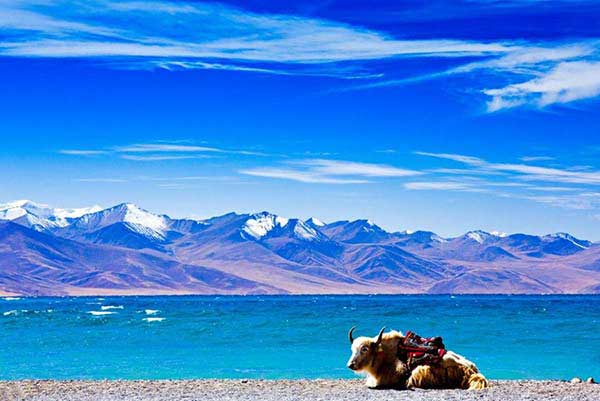
Namtso Lake.
Tickets: Prices, Booking, and Tips
When planning your visit to Namtso Lake, understanding ticket prices, booking options, and some helpful tips can enhance your experience at this breathtaking destination.
Ticket Prices
Visiting Namtso Lake involves a nominal entrance fee. Currently, the ticket price is approximately 60 RMB (around $9 USD). This fee grants you access to the scenic area, allowing you to explore the stunning landscapes surrounding the lake. Be sure to keep some cash handy, as many local vendors and attractions may not accept credit cards.
Booking Options
While you can arrange a trip to Namtso Lake independently, many travelers prefer to join organized tours for convenience and insight. Several tour operators offer package deals that include transportation from Lhasa, accommodation in Damxung, and guided tours of key sites around the lake. Prices for these tours typically start at $779 USD per person for a small group tour, which covers transportation, accommodation, and some meals.
If you opt for a self-guided trip, consider booking your transportation in advance, especially during the peak summer months when demand is high. Renting a car or hiring a driver can be arranged in Lhasa, but it’s wise to plan ahead to avoid any last-minute hassles.
Tips for a Smooth Visit
-
Plan for Two Days: Given the travel time and high altitude (Namtso Lake sits at 4,718 meters), it’s recommended to allocate at least two days for your visit. This allows for a more relaxed experience and the chance to enjoy sunset views over the lake.
-
Book Early for Discounts: If you’re considering a tour, booking early can often secure you discounts, especially during the busy summer season.
-
Weather Considerations: Be prepared for changing weather conditions. Dressing in layers is crucial, as temperatures can fluctuate significantly between day and night.
-
Cash is King: While major cities may have ATMs, it’s a good idea to carry cash for small purchases and for paying the yak photo fee (around 50 RMB).
-
Altitude Awareness: Take time to acclimatize in Lhasa before heading to Namtso Lake. Spending a few days at a lower altitude can help prevent altitude sickness.
Conclusion
A trip to Namtso Lake is undoubtedly a highlight of any Tibetan adventure. Whether you choose to explore on your own or join a guided tour, understanding the ticket prices, booking options, and practical tips will set the stage for a memorable journey to this serene and sacred lake. Enjoy the tranquility, stunning views, and rich culture that await you at Namtso Lake!
How to Get There: A Complete Transportation Guide
Reaching Namtso Lake, one of Tibet’s most revered natural treasures, requires a bit of planning, especially considering its high altitude and remote location. Situated approximately 224 kilometers north of Lhasa, the journey promises breathtaking scenery along the way. Here’s how to make your way to this stunning destination:
By Road from Lhasa
1. Self-Drive or Rental Car:
For the adventurous traveler, renting a car or self-driving can be an exhilarating option. The drive takes about four hours, but you should allocate extra time to stop and enjoy the remarkable views along the route. The roads are generally well-paved, but be prepared for winding and rugged sections, especially as you approach Nagenla Pass at 5,190 meters above sea level.
2. Guided Tours:
For a hassle-free experience, consider joining a guided tour. Many tour operators in Lhasa offer two-day trips to Namtso Lake, which include transportation, accommodation, and a guide who can enrich your visit with local insights. This is particularly recommended for those unfamiliar with the region or who prefer not to drive.
3. Public Transportation:
Although less common, it is possible to take a bus from Lhasa to Damxung, the nearest town to Namtso Lake. From Damxung, you can arrange a taxi or shared vehicle to reach the lake. However, this option can be time-consuming and may require careful planning regarding schedules and availability.
Accommodation
Since there are no lodging facilities at the lake itself, your best option is to stay overnight in Damxung. This town offers basic accommodations, ranging from simple guesthouses to middle-range hotels. It’s advisable to book your stay in advance, especially during peak travel seasons.
Best Time to Visit
The ideal time to visit Namtso Lake is between July and September when the weather is mild, and the scenery is at its most vibrant. This season also allows you to experience the lush grasslands and blooming flowers that surround the lake. Keep in mind that winter visits are possible but can be risky due to snow closures, particularly when crossing Nagenla Pass.
Preparation Tips
-
Altitude Acclimatization: Upon arriving in Lhasa, spend a few days acclimatizing to the altitude before heading to Namtso Lake. This will help prevent altitude sickness as the lake sits at an elevation of 4,718 meters.
-
Layered Clothing: The weather at Namtso Lake can be unpredictable, with strong winds and rapidly changing temperatures. Dress in layers and bring sun protection, including sunscreen and sunglasses.
-
Snacks and Supplies: Given the long drive, it’s wise to bring snacks and water. There are limited facilities along the way, so stock up before you leave Lhasa.
Final Thoughts
Namtso Lake is not just a destination; it’s an experience that combines stunning natural beauty with spiritual significance. Whether you choose to drive, join a tour, or utilize public transportation, your journey to this sacred lake will be filled with unforgettable moments. So prepare well, and enjoy the ride to one of Tibet’s most cherished landscapes!

Namtso Lake.
Local Cuisine and Accommodation Nearby
When planning your visit to Namtso Lake, indulging in local cuisine and finding a comfortable place to stay can enhance your experience significantly. While the lake itself offers breathtaking views and spiritual sites, the nearby town of Damxung is where you’ll find the best options for both food and accommodation.
Local Cuisine
In Damxung, you can savor authentic Tibetan dishes that reflect the region’s rich cultural heritage. Traditional meals often include:
- Momos: These delightful Tibetan dumplings can be found in various fillings, including meat, vegetables, and cheese. They are typically steamed and served with a spicy dipping sauce.
- Thukpa: A hearty noodle soup, thukpa is perfect for warming up after a day of exploring the high-altitude landscapes. Look for variations with lamb, chicken, or vegetables.
- Tibetan Bread: Locally made bread, often served with butter tea (a traditional beverage made from tea, yak butter, and salt), is a staple in Tibetan diets and a must-try during your stay.
- Yak Meat Dishes: Rich in flavor and a source of sustenance for the nomadic people, yak meat is commonly prepared in stews and grilled dishes across local eateries.
Accommodation Options
While there are no accommodations directly on the shores of Namtso Lake, Damxung provides several options for travelers seeking a comfortable night’s rest after a day of exploration. Here are a few recommendations:
-
Tibetan Guesthouses: These simple yet cozy guesthouses offer a glimpse into local life. Many provide basic amenities such as shared bathrooms and communal areas, allowing you to connect with fellow travelers.
-
Mid-range Hotels: If you’re looking for a bit more comfort, consider staying at one of the mid-range hotels in town. These establishments typically feature private rooms, hot water, and Wi-Fi, making them suitable for a restful night before your adventure at Namtso Lake.
-
Homestays: For a unique experience, opt for a homestay with a local family. This option not only provides a bed but also the chance to immerse yourself in Tibetan culture, enjoy home-cooked meals, and gain insights into the daily life of the locals.
Final Thoughts
With its stunning landscapes and rich cultural experiences, a trip to Namtso Lake is truly unforgettable. By enjoying local Tibetan cuisine and staying in comfortable accommodations in Damxung, you’ll undoubtedly enrich your experience as you explore this sacred and picturesque destination. Whether you choose to dine on steaming momos or rest in a welcoming guesthouse, the warmth of Tibetan hospitality will make your journey even more memorable.
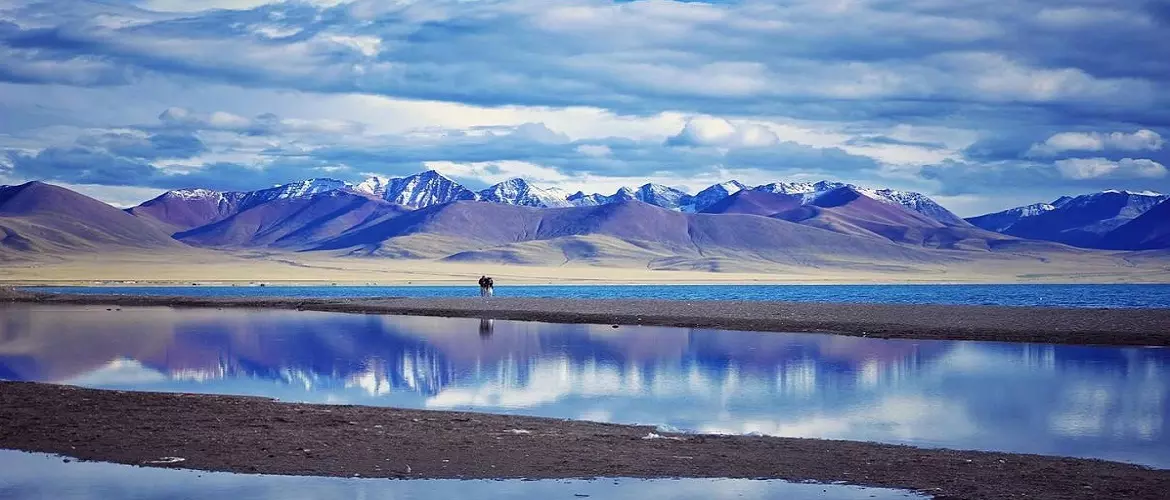
Namtso Lake.
Frequently Asked Questions
Frequently Asked Questions about Namtso Lake
1. How do I get to Namtso Lake from Lhasa?
To reach Namtso Lake from Lhasa, you can hire a private vehicle or join a guided tour. The journey takes approximately 4 hours, covering a distance of 224 kilometers. The route offers breathtaking views as you pass through grasslands and cross the Nagenla Pass, reaching an elevation of 5,190 meters.
2. How many days should I allocate for my trip to Namtso Lake?
We recommend spending at least 2 days for your visit to Namtso Lake. This allows you to enjoy the scenic drive, explore the beautiful landscapes, and perhaps catch a stunning sunset by the lake. An overnight stay in Damxung, which is about 39 kilometers from the lake, is advisable as there are no accommodations directly at the lakeshore.
3. What is the best time of year to visit Namtso Lake?
The ideal time to visit Namtso Lake is during the summer months, from July to September. During this period, the weather is pleasant, and the landscape is vibrant with blooming flowers and lush grasslands. Additionally, you may have the opportunity to experience local festivals such as the Ngaqu Horse Racing Festival.
4. Is it safe to visit Namtso Lake in winter?
Yes, it is possible to visit Namtso Lake in winter; however, be prepared for potential road closures due to heavy snow, especially at the Nagenla Pass. If you plan to visit during this season, monitor the weather conditions and have a backup plan in case of delays.
5. How should I prepare for the high altitude at Namtso Lake?
Namtso Lake is located at an altitude of 4,718 meters, which can increase the risk of altitude sickness. It’s essential to acclimatize by spending a few days in Lhasa before heading to the lake. Stay hydrated, avoid strenuous activities upon arrival, and consider consulting with a healthcare provider about altitude sickness medications.
6. What should I wear when visiting Namtso Lake?
Dressing in layers is key when visiting Namtso Lake due to the fluctuating temperatures. Bring warm clothing, including a windproof jacket, along with sunscreen, sunglasses, and a hat to protect against the strong sun at high altitudes. Prepare for colder weather, especially during the evenings and at higher elevations.
7. Are there any cultural sites to visit around Namtso Lake?
Yes! The Tashi Peninsula is a must-visit area on the southern shore of Namtso Lake, featuring the Tashi Dor Monastery and various pilgrimage sites. You can witness local Tibetan pilgrims engaging in the sacred kora (circumambulation) around the lake and enjoy the stunning natural beauty of the area.
8. Can I take photos with the yaks at Namtso Lake?
Absolutely! There are many beautifully decorated yaks near the lake that are popular for photos. A typical fee of about 50 RMB is charged for taking pictures with them. Local families rely on this income, so feel free to engage and capture memorable moments with these iconic Tibetan animals.
Final Thoughts on Your Trip
Visiting Namtso Lake is not just a journey to one of Tibet’s most breathtaking landscapes; it’s a profound experience that resonates with the spirit of adventure and tranquility. As you stand by the shores of this sacred lake, surrounded by the majestic Nyenchen Tanglha Mountains, you’ll find yourself enveloped by an atmosphere that feels both timeless and deeply spiritual. The vibrant colors of summer, the serenity of the winter snows, and the rich cultural tapestry woven by local nomadic traditions all contribute to the allure of Namtso.
Taking the time to explore the Tashi Peninsula, witness the grandeur of the Holy Elephant Gate, and interact with the welcoming Tibetan people will enrich your understanding of this remarkable region. Remember to embrace the high-altitude environment with patience and preparation, allowing yourself to truly absorb the natural beauty and cultural significance of this holy site.
Whether you’re capturing unforgettable photographs with the iconic yaks, meditating by the waters, or simply soaking in the stunning vistas, your visit to Namtso Lake will undoubtedly leave an indelible mark on your travel memories. As you reflect on your journey, let the tranquility and majesty of Namtso inspire you long after you’ve returned home. Safe travels, and may your adventures continue to be as enriching and transformative as the beauty of Tibet itself.